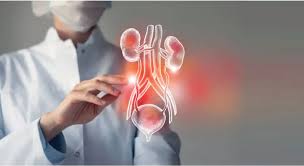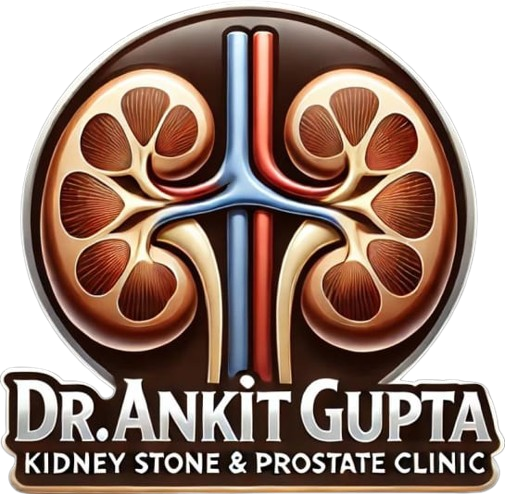Reconstructive Microscopic Urology
Home > Reconstructive & Microscopic Urology

Reconstructive & Microscopic Urology
Reconstructive and microscopic urology focuses on restoring urinary and genital function through advanced surgical techniques. Reconstructive urology addresses conditions like urethral strictures, fistulas, and trauma-related injuries, aiming to rebuild the genitourinary tract and improve quality of life. Microscopic urology employs high-powered microscopes to perform delicate procedures such as varicocelectomy, vasectomy reversal, and sperm retrieval, enhancing precision and minimizing complications. These specialized approaches are essential for treating complex urological conditions, ensuring optimal outcomes with reduced recovery times.
Know More
About Reconstructive & Microscopic Urology
-
 Symptoms
Symptoms
-
 Diagnosis
Diagnosis
-
 How We Perform
How We Perform
-
 Why Is Treatment Needed?
Why Is Treatment Needed?
-
 Treatment
Treatment
-
 Rehabilitation
Rehabilitation
-
 Prevention
Prevention
Reconstructive and microscopic urology procedures are typically considered when patients experience conditions that significantly affect their quality of life and are not responsive to conservative treatments. Common indications include:
Urethral Strictures: Narrowing of the urethra causing difficulty in urination.
Hypospadias: A congenital condition where the urethral opening is on the underside of the penis.
Genital and Urethral Trauma: Injuries resulting from accidents or surgical procedures.
Neurogenic Bladder Dysfunction: Bladder issues caused by nerve damage, often due to spinal cord injuries or neurological disorders.
Fistulas: Abnormal connections between the urinary tract and other organs.
Erectile Dysfunction: Persistent inability to achieve or maintain an erection.
Urinary Incontinence: Involuntary leakage of urine.
Accurate diagnosis is essential to determine the suitability of reconstructive or microscopic urology procedures:
Imaging Studies: Ultrasound, CT scans, and MRIs to visualize internal structures.
Cystoscopy: Direct visualization of the bladder and urethra using a flexible camera.
Urodynamic Testing: Assesses bladder function and pressure.
Biopsy: Tissue sampling for histopathological examination.
Laboratory Tests: Blood tests to assess organ function and detect abnormalities.
These diagnostic tools help in planning the appropriate surgical approach.
Reconstructive and microscopic urology involves surgical techniques to repair, restore, or reconstruct the urinary tract and male reproductive system. These delicate procedures often use fine instruments and operating microscopes for high precision and optimal outcomes.
Key Points:
Preoperative Evaluation:
Detailed imaging (like ultrasound, MRI, or retrograde urethrogram), lab tests, and functional studies (urodynamics) are done to assess the severity and plan the surgical approach.Anesthesia Administration:
General or regional anesthesia is used depending on the complexity and duration of the procedure.Surgical Access:
Small, carefully planned incisions are made to expose the affected area, such as the urethra, bladder, or reproductive ducts.Microscopic Technique:
An operating microscope is used for enhanced visualization, especially in procedures involving very fine structures like the vas deferens or urethra.Reconstruction or Repair:
Damaged or narrowed sections of the urinary tract are repaired or reconstructed using techniques like grafting, anastomosis, or tissue flaps. Common procedures include urethroplasty, pyeloplasty, and vasovasostomy.Tissue Handling and Suturing:
Microsurgical instruments and ultra-fine sutures are used to join tissues with precision, minimizing scarring and preserving function.Closure and Dressing:
The incision is closed with sutures, and sterile dressings are applied. A catheter or stent may be placed temporarily to aid healing.Postoperative Monitoring:
Patients are monitored for urinary flow, healing of the repair, and early signs of infection or stricture. Imaging or flow studies may be done post-op.
Reconstructive and microscopic urology treatments are essential for restoring the normal structure and function of the urinary and reproductive systems. These conditions can significantly affect quality of life, cause long-term complications, and impact fertility or urinary control if left untreated.
Key Points:
Restore Urinary Function:
Conditions like urethral strictures, bladder injuries, or congenital abnormalities can block or disrupt urine flow. Surgery helps restore normal urination.Relieve Symptoms:
Patients may experience pain, difficulty urinating, incontinence, or urinary tract infections. Treatment provides symptom relief and comfort.Prevent Kidney Damage:
Obstructions or reflux in the urinary tract can lead to back pressure on the kidneys, causing long-term damage if not corrected surgically.Reconstruct After Trauma or Surgery:
Accidents, previous surgeries, or radiation therapy can damage urinary structures. Reconstructive surgery repairs or rebuilds these areas to restore function.Improve Fertility:
In men, microscopic surgery (like vasovasostomy or varicocelectomy) can help restore sperm flow and improve chances of conception.Enhance Quality of Life:
Many urologic issues can cause embarrassment or limit daily activities. Effective treatment restores confidence and improves lifestyle.Treat Congenital Defects:
Conditions present from birth, such as hypospadias or vesicoureteral reflux, require correction to ensure normal development and function.Prevent Recurrent Infections or Strictures:
Left untreated, structural issues can lead to repeated infections or narrowing of the urethra, requiring frequent interventions. Surgery provides a long-term solution.
Reconstructive and microscopic urology encompasses various surgical and interventional procedures:
Urethroplasty: Surgical reconstruction of the urethra to treat strictures.
Hypospadias Repair: Surgical correction of the congenital anomaly in males.
Penile Prosthesis Implantation: Surgical insertion of a device to treat erectile dysfunction.
Bladder Augmentation: Surgical enlargement of the bladder to improve storage capacity.
Neobladder Formation: Creation of a new bladder from intestinal tissue.
Fistula Repair: Surgical closure of abnormal connections between organs.
Microsurgical Techniques: Use of specialized instruments under high magnification for precise tissue repair.
These procedures aim to restore normal function and improve the quality of life for patients.
Post-operative rehabilitation is crucial for recovery:
Physical Therapy: Helps in regaining strength and mobility.
Pain Management: Use of medications and techniques to manage discomfort.
Nutritional Support: Guidance on diet to support healing.
Psychological Counseling: Addressing emotional well-being during recovery.
Effective rehabilitation helps patients return to daily activities and maintain a good quality of life.
Preventive strategies aim to reduce the risk of urological conditions requiring reconstructive interventions:
Healthy Diet: Maintaining a balanced diet to prevent obesity and related conditions.
Regular Exercise: Engaging in physical activity to promote overall health.
Regular Screenings: Participating in recommended screenings for early detection of conditions like cancer.
Safe Sexual Practices: To prevent sexually transmitted infections leading to urethral strictures.
Avoidance of Irritants: Limiting exposure to substances that can irritate the urinary tract.
Timely Medical Consultation: Seeking medical advice for persistent urinary symptoms to prevent progression to invasive conditions.
Adopting these lifestyle changes can contribute to overall health and may lower the risk of developing urological conditions.
WHY US?
Why Choose Dr. Ankit Gupta
At our clinic, Dr. Ankit Gupta offers expert care in urology, kidney transplantation, and andrology. With extensive experience in reconstructive and microscopic urology, as well as proficiency in laparoscopic and robotic surgeries, Dr. Gupta employs advanced techniques to ensure optimal outcomes and smoother recoveries for his patients.
70,000+
Patients Experience
10,000+
endoscopic surgeries
1000+
Urologic Oncologist surgeries
1000+
Invasive Urology Surgeries
Check Surgery Cost
We believe in transparency. You can enquire about the Surgery Cost and we will help you with complete detailed treatment process till your recovery.
Frequently Asked Questions
Reconstructive urology involves restoring normal structure and function of the urinary tract and genitals after injury, birth defects, surgery, or disease.
Microscopic urology uses high-powered microscopes and fine instruments for precise surgeries, often in procedures like vasectomy reversal or nerve-sparing repairs.
Common conditions include urethral stricture, urinary incontinence, pelvic organ prolapse, trauma-related injuries, and fistulas.
Procedures include urethroplasty, bladder reconstruction, artificial urinary sphincter placement, and penile reconstruction.
No. It addresses conditions in both men and women, including issues related to childbirth, cancer treatments, or congenital abnormalities.
Microscopic surgery offers higher precision, better outcomes, and reduced damage to surrounding tissues, especially in delicate areas like nerves or small vessels.
Recovery time varies. Minor procedures may need 1–2 weeks, while major reconstructions may require 4–6 weeks or more, along with follow-up care.
Many reconstructive surgeries provide long-lasting or permanent relief, but outcomes depend on the condition’s severity and the patient’s overall health.
What Our Patients Say
Based on 160 reviews








My experience with Dr. Ankit Gupta was very good. He treated my left kidney stone with laser surgery. I was discharged the next day after the surgery. He is the best urologist and kidney stone doctor in Gurgaon. 🙏
Best Regards
Subodh Rathore

